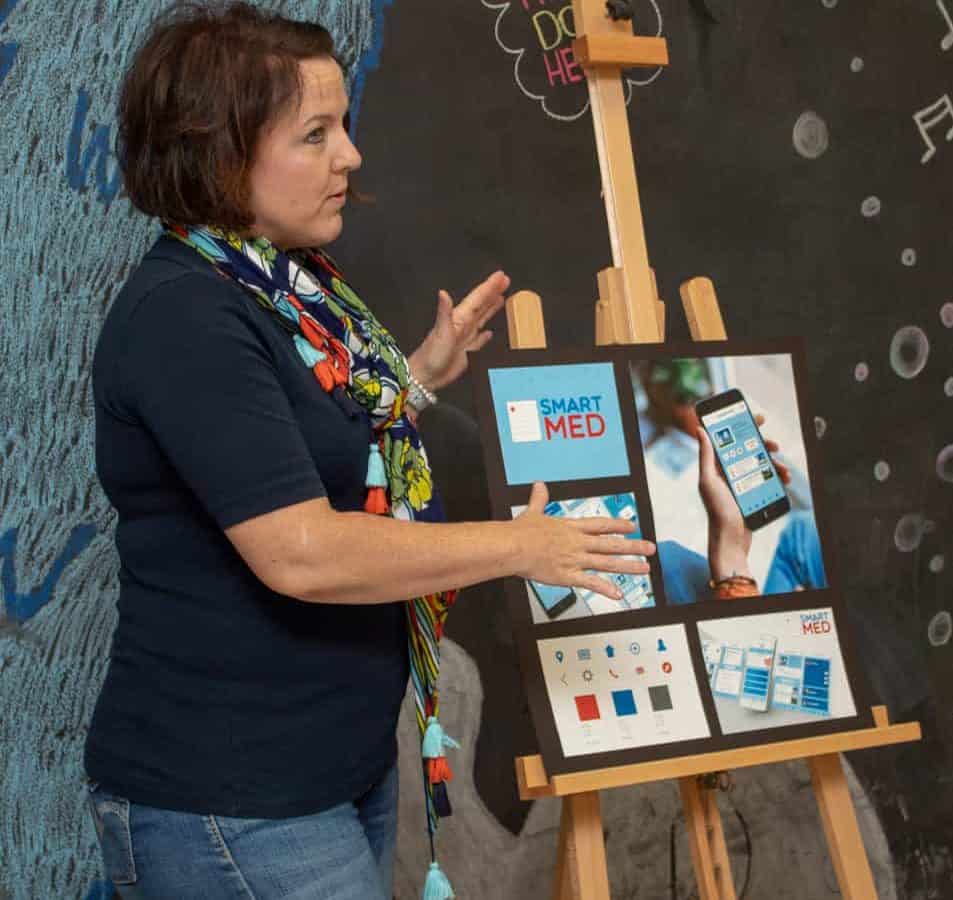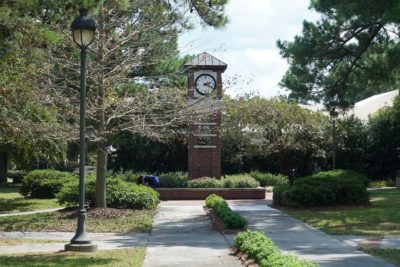

I admire people that intuitively understand their life’s journey at an early age. My husband is an engineer—and always wanted to be one. With a natural curiosity and instinctive problem solving skills, he identified a love of math and chemistry in high school and set his path to become a research and development engineer. Despite growing up in a very rural part of Georgia, he achieved his goal of attending Georgia Tech and earning an advanced degree in engineering.
I can’t say that my career goals were that clear or even born out of a specific moment in time. Rather, my personal-to-professional journey was more labyrinth-like, with sinuous turns and pivotal moments that ultimately revealed a passion for design education and a genuine love for the community college system.
Turn one.
Despite a desire to pursue the arts in high school, I quickly found scheduling conflicts with their requirements of the more traditional academic honors track and the arts. I was able to find one small creative outlet on my high school’s yearbook staff where I fell in love with page layout and typography. I became so passionate about layout and design that my parents subscribed to multiple magazines just so I could cut them up and recreate new advertisements.
However, it never dawned on me that this creative interest had an actual career name (Advertising and Graphic Design/Commercial Art). So when it came time for college, choosing a life-long career at the age of 17 proved difficult for me. I changed majors multiple times and after academic counseling, finally chose a liberal arts degree in history so that I could have “the four year degree.”
Turn two.
I graduated with honors with a bachelor of arts in history from an excellent university, but ultimately didn’t have a career path for my life. I struggled to find gainful employment and finally landed an entry level job in sales support for a plastics manufacturing company, only because my best friend’s mom worked there. My first job was an education in itself. I learned about business, marketing, and graphic design. I worked on my first-ever Mac computer with programs like Photoshop 7 and Quark Express.
This was it! I eventually flexed my creative muscle by earning a promotion into the company’s marketing department and advanced from developing corporate marketing materials to creating effective trade show environments then launching the company’s first ever website. All the while, I instinctively made good creative decisions along the way.
Although I eventually worked my way up to manager of the marketing services department, I quickly learned that the world of design was changing at a rapid pace and I was unprepared. Although I had the drive and initiative for a creative career, I lacked the necessary training to effectively work in the field of graphic design. I ultimately made the difficult decision to leave my full-time job to go back to college. Though this time, my career passion had a name.
Turn three.
After much research on college options, I enrolled in the Advertising and Graphic Design program at Catawba Valley Community College in Hickory. While I was tremendously excited to learn more about the design process and more about technical training, I wasn’t quite sure how a corporate transplant and a wife and mom of two young boys could relate to—or even be relatable to—the other college students.


As I walked into Jan Houser’s GRD 110 Typography I class, I was so sure that I would be so woefully out-of-place that I almost turned around, ran back to my car, and called the whole thing off. After all, when I made the decision to attend CVCC, I knew that it would be a monumental task. Each morning, I had two children to dress and get ready for the day. I had lunches, book bags, and diaper bags to pack, and then finally had to drop off one at school and one at childcare. My day started at 5 a.m. with an entire litany of tasks and checklists before my foot could even step on campus and think about design.
At my local community college, I was finally able to experience and learn about design and technology and begin to understand and identify areas of creative strength. As a non-traditional student (translation: older student), I suppose it was natural to become a peer leader during those two years at CVCC. Fellow design students came to me for both design suggestions and technical guidance. In the process, I found an unforeseen love of design education and teaching these topics to others. After graduation, I began teaching part-time as an adjunct instructor in the Advertising and Graphic Design program.
Turn four.
As I began to further explore the intersection of design, education, technology, and career, I wanted to learn even more on how to weave these ideologies into an educational platform for design students. More specifically, I wanted to learn how to help students graduating at the community college level find employment in a creative field. Through the lens of my own journey, I understood the necessity of preparedness in a creative professional field.
Thus, I was passionate about studying curriculum and structuring a tract that blended both the technical aspects of the digital age and the traditional artistic pursuits of design. I thought to myself, “How do these two things blend together for successful career opportunities for students?” To this end, I enrolled into a Master of Science in Technology program at Arizona State University to study under career technical educators, such as Thomas Schildgen, and focused my graduate research on bridging the gap between graphic design education and professional practice.
Turn five.
Today, I am the program head of the Advertising and Graphic Design program at Catawba Valley Community College where I have the honor and privilege to lead the same program that I graduated from almost a decade ago. While many aspects are the same, many have changed. I’m finding that graduates of our Advertising and Graphic Design program must now be trained in traditional print applications while also possessing the ability to solve complex design problems from a larger context. They must be adept in using the most recent technological advances, sensitive to industry trends, and skilled in seamlessly blending together the areas of web, interactive design, and multimedia—a big task to fill in just two short years.
While it may be difficult to pinpoint exactly when my career in design and technical education began, it is easy in retrospect to identify the journey. Certainly, a foundation may have taken root as a high school yearbook editor or in industry by working with design colleagues in marketing. Certainly, it was sharpened while as a student in the CVCC Advertising and Graphic Design program and refined at Arizona State University.
Though, as I reflect upon my personal career journey, I sense that my career choices were never meant to be direct and intuitive as I have envied so often in others. Rather, I found a love for design education and passion for the community college system through a series of twists and turns that ultimately helped me better understand education, creativity, and workforce preparedness in a whole new way.




